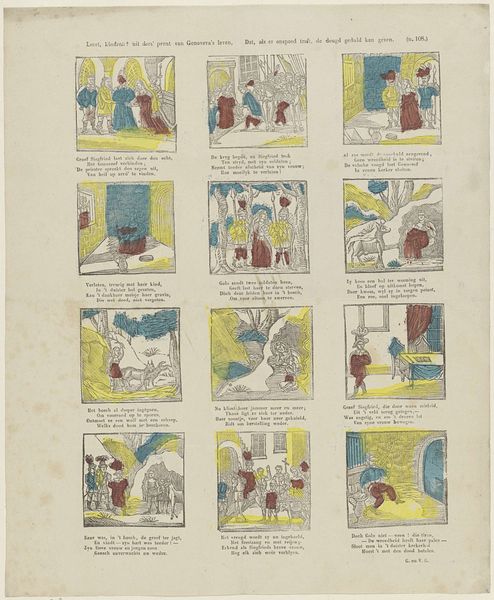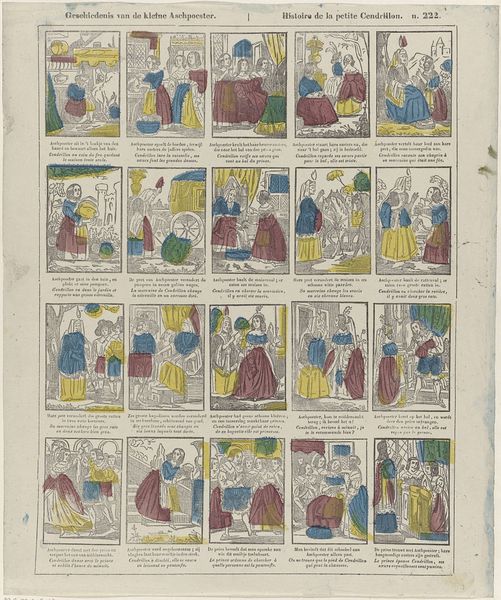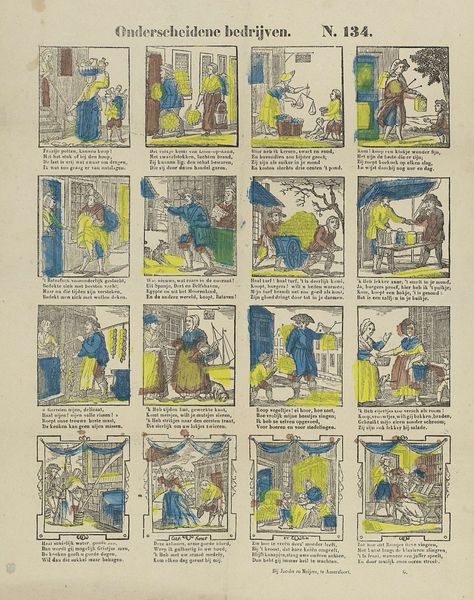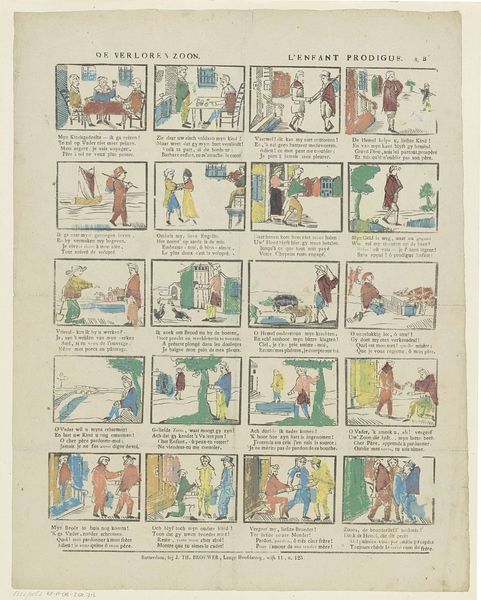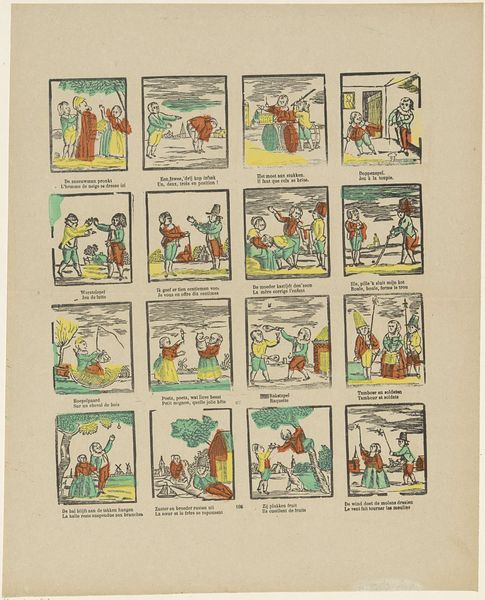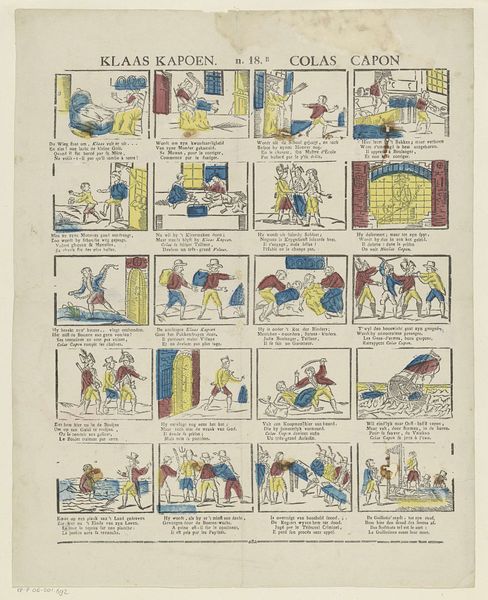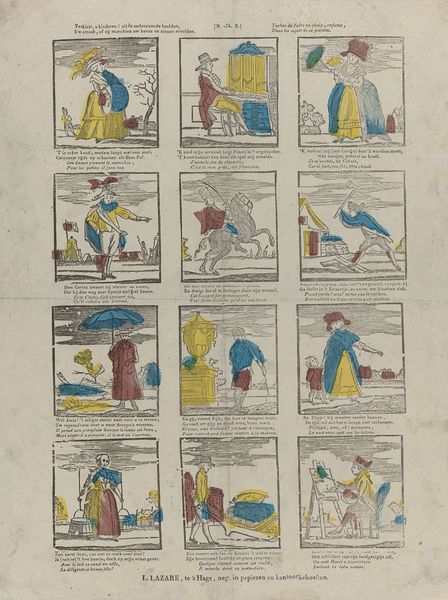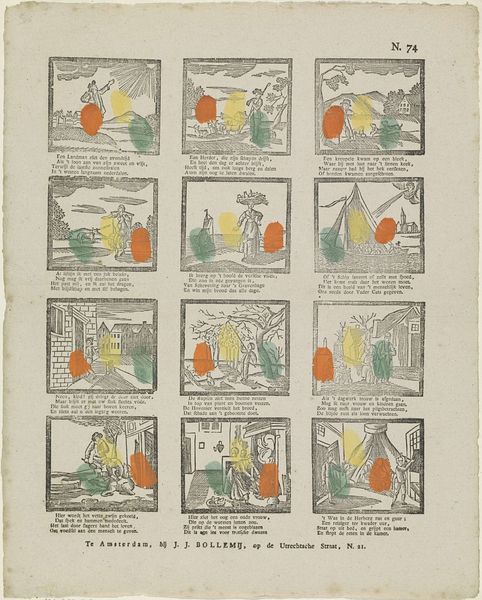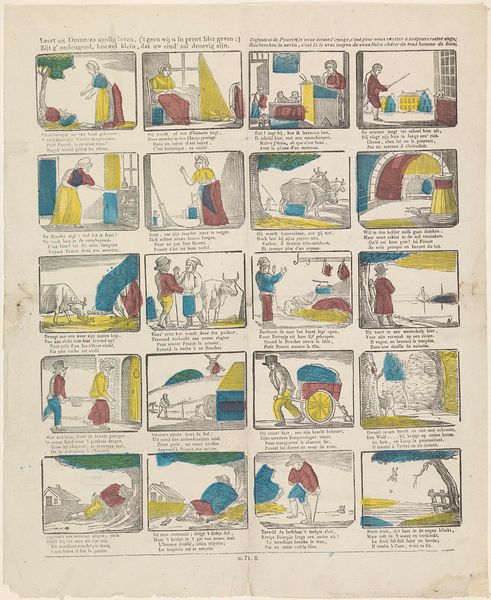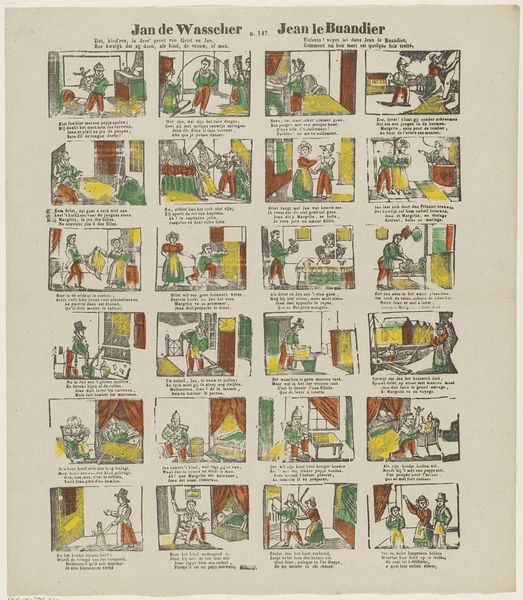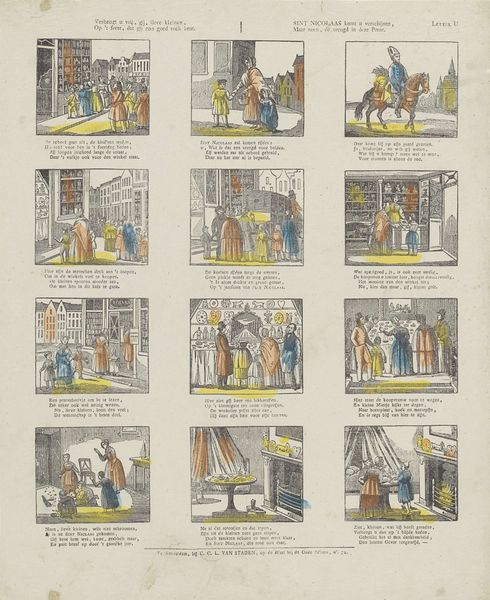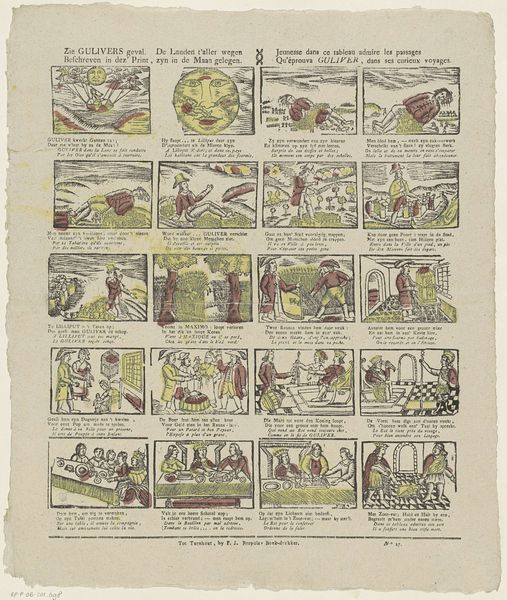
De schikking van het Albestier / Werkt overäl, nu ginds, dan hier / Dies let, ô jeugd! op die bedryven, / Welke u daar 't voorbeeld van beschryven 1833 - 1900
0:00
0:00
graphic-art, print, etching, engraving
#
graphic-art
#
comic strip sketch
#
narrative-art
# print
#
etching
#
folk-art
#
comic
#
history-painting
#
cartoon carciture
#
engraving
Dimensions: height 391 mm, width 321 mm
Copyright: Rijks Museum: Open Domain
Curator: So, this print, titled "De schikking van het Albestier," created sometime between 1833 and 1900 by J. Robyn, is a rather curious example of graphic art. The individual scenes almost feel like frames from a comic strip. The mood is…didactic? How do you interpret this work? Editor: It definitely has a narrative feel, almost like a visual sermon. The captions beneath each scene make me think it’s supposed to be telling a story, perhaps a moral one aimed at young people. What exactly do you see at play in the history and social context of the image? Curator: Well, I see a layering of power dynamics being subtly reinforced through a veneer of morality. Notice the recurring themes: obedience to authority, the idealization of sacrifice, and the presence of patriarchal structures, even within supposed acts of charity. Editor: So, you are saying it isn't a simple story, but really reflects an underlying political agenda of the time? How? Curator: Precisely. Consider the societal expectations placed upon young people during the 19th century. Through printmaking and popular imagery, such as this example, morality became deeply intertwined with social control. And what role did women play at that time? Editor: If I am understanding correctly, then the etching, due to the patriarchal setting of the 1800's, really shows a reinforcement of strict social hierarchy. Were there particular activist movements that resisted such reinforcement? Curator: Indeed. Proto-feminist movements were gaining traction. So this imagery, which seems benign, can be viewed as a kind of cultural battleground. Did anything change for you when you realized this? Editor: Yes, definitely. Initially, I saw just a quaint, slightly preachy illustration. But viewing it through this lens reveals the complex power structures that shaped its creation and consumption. Curator: Absolutely. It reminds us to look beyond the surface, questioning who benefits from the narratives presented to us. Editor: I never thought of popular prints as tools of social influence. I see them now as holding power!
Comments
No comments
Be the first to comment and join the conversation on the ultimate creative platform.
